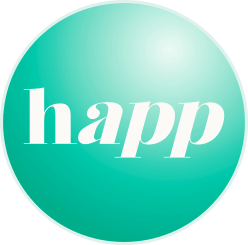The COVID-19 pandemic has brought health and wellbeing concerns to the top of the business agenda. Employers are playing a vital role in protecting employees from the risk of infection by implementing a raft of health and safety measures, from enhanced hygiene to social distancing. They are also supporting many of their people to work from home wherever possible; however, that can bring its own problems.
As well as worries about becoming ill, some employees feel isolated working from home and stressed from juggling their caring responsibilities and work. Others are experiencing financial hardship. While news of a potential vaccine is welcome, the mental health implications of the virus outbreak will continue to be significant.
Partly as a result of the pandemic, Gartner has highlighted employee wellbeing as one of their Top 5 Priorities for HR Leaders in 2021. They predict that almost half (48%) of employees will continue to work remotely at least some of the time. As such, they now consider analysing wellbeing strategies and identifying areas for improvement to be a key strategic investment to achieve greater returns from hybrid teams.
Measuring and maintaining employee wellbeing is on-going work. It’s not an initiative you can set up once in reaction to a crisis and then assume it will simply carry on. Martin Seligman, in his 2011 book Flourish, outlined his PERMA model as an easy to understand framework for creating and maintaining wellbeing.
Seligman’s PERMA model has five pillars to wellbeing:
Positive emotions
In the workplace, positive emotions are important. And, not just to make employees ‘feel good’ or ‘be happy’. Cultivating positive emotions in the working environment is strongly associated with smarter thinking and higher productivity.
Fear is a perfectly natural response to the stress of the pandemic and its economic fallout. But, it does not help us to be more productive and employees can benefit from deliberate actions and reminders of positivity
Action: Schedule weekly meetings to share good news and express appreciation for co-workers efforts or try some short mindfulness exercises.
Engagement
There’s strong evidence that playing to our strengths is key to our happiness, success and engagement at work. This isn’t about only doing what we love; it’s more about understanding why we love doing certain things (hint: we all tend to like things we’re good at) and aiming to use those skills more. A major Gallup study found that strength-based development in the workplace can increase employee engagement by up to 15%, sales by 19% and profits by 29%.
Action: Take time to understand each employee’s individual strengths and try to assign roles, tasks and projects where they can use those strengths,
Relationships
There is a mountain of evidence that people who enjoy strong relationships and social connections are happier, live longer and have fewer health problems; it seems everything from immunity to memory loss is affected by our relationships. Employees who feel valued and listened to are more productive and willing to collaborate with others. As people try to come to terms with the economic and social changes forced upon us by the pandemic, nurturing caring relationships – which can be achieved even with remote teams – has never been more important.
Action: Find time for employees to gather purely for social connections and non-work related conversations. With remote teams, encouraging everyone to turn their cameras on helps to build rapport.
Meaning
Meaningful work is a big driver of job satisfaction and productivity. People don’t just work for a pay cheque; they want a purpose. According to Gallup, one in three employees worldwide strongly agrees with the statement, “The mission or purpose of my organisation makes me feel my job is important.”
Employers can make work more meaningful by identifying what motivates their employees and linking tasks to those motivations. For example, why do we handle customer queries efficiently; is it simply to hit our operational targets or do we want to make someone’s life easier and put a smile on their face? Focussing on the higher meaning is what motivates employees and gets them through even challenging days.
Action: Define the purpose of your organisation, department and individual roles and be prepared to communicate and reinforce that purpose through your daily conversations and actions.
Achievement
In many companies people are rewarded purely by results. Sometimes, it’s good to challenge this mindset. Employees report a greater inner sense of accomplishment when they’re given the freedom to focus on taking the right steps towards achievement, rather than simply focusing on reaching the pre-defined outcomes no matter what.
Action: Give employees the freedom and space to make their own decisions and look for ways to reward the positive, ethical steps they take towards reaching the end result. Daniel Pink refers to these as non-contingent or ‘now that’ rewards. They are given after a task is complete in order to recognise and reinforce good choices.
Happ Employee Experience Management Platform helps companies collect, measure and analyse employee insights to boost engagement and productivity. If you’d like help tracking your employee wellbeing, please get in touch or book a free demo.

